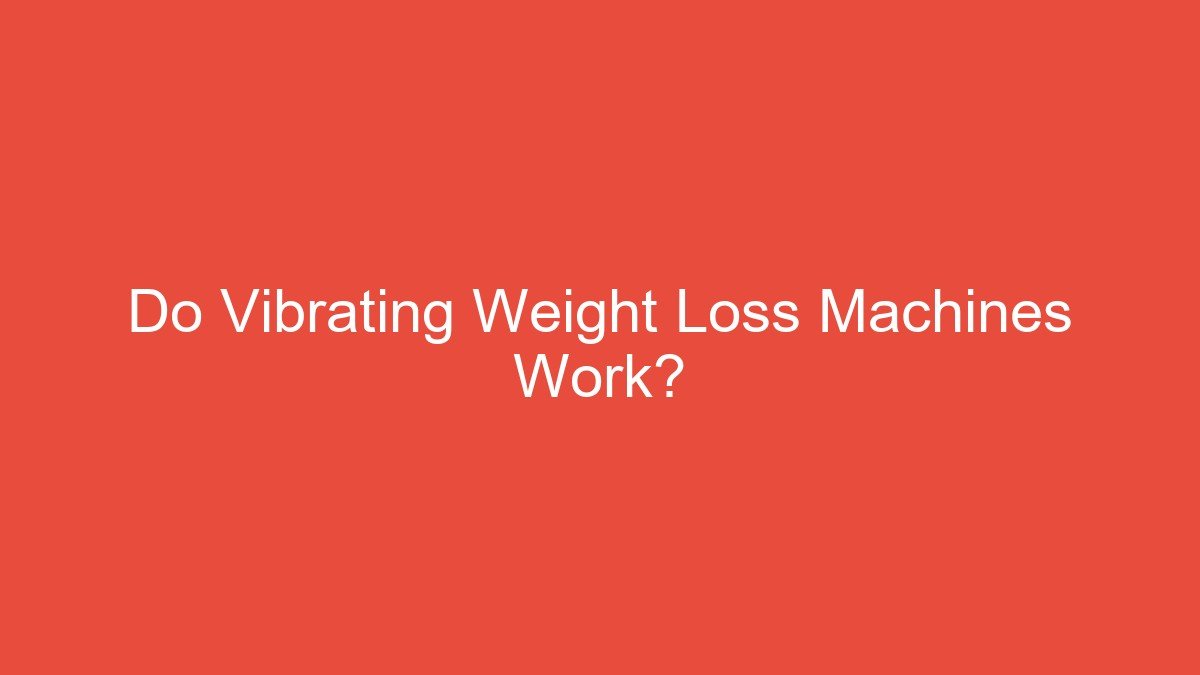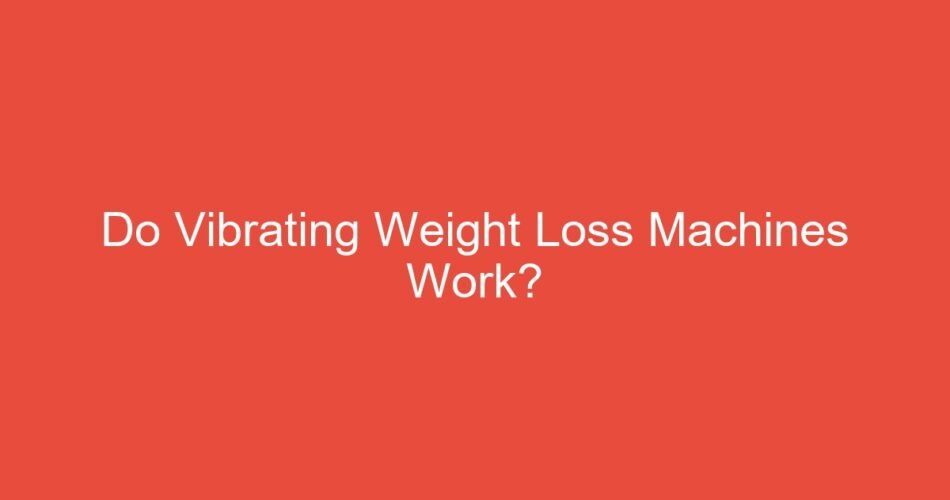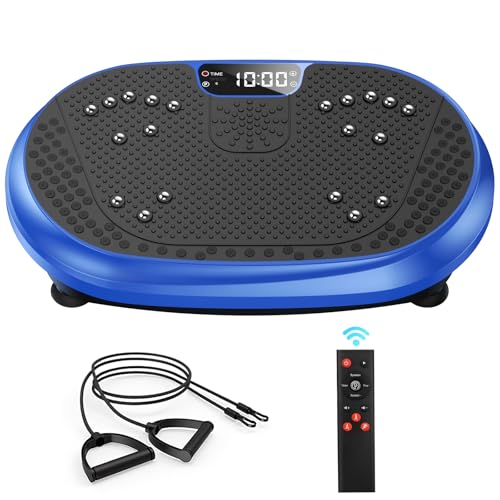
Do vibrating weight loss machines work? The scientific data is clear: while these vibration therapy plates offer proven benefits like muscle stimulation and increased bone density, they are not a substitute for the calorie-burning exercise required for true weight management and fat loss.
Do vibrating weight loss machines work? The consensus across clinical studies is that vibrating weight loss machines do not work as a primary, standalone method for significant weight loss or fat reduction. While they are often marketed as a simple solution, research confirms that whole-body vibration (WBV) primarily assists with muscle strength, circulation, and balance, rather than achieving the high calorie burn needed for effective weight management. These devices should be viewed as supplementary fitness equipment, not a replacement for traditional aerobic exercise and dietary changes necessary for creating a sustained calorie deficit.
The Science Behind Whole Body Vibration (WBV)
Whole Body Vibration (WBV) equipment operates by rapidly oscillating a platform beneath the user’s feet. These vibrations trigger involuntary muscle contractions. If you stand on the platform, your muscles constantly contract and relax dozens of times per second as your body works to stabilize itself against the motion.
🛒 Recommended Product
This involuntary muscle stimulation is the core mechanism of the machine. The intensity of the vibration is often measured in Hertz (Hz) and the gravitational force (G-force) applied to the body. Higher G-forces theoretically force the muscles to work harder. While this rapidly repeated action helps activate muscle fibers—especially Type 1 (slow-twitch) fibers—it does not demand the sustained energy output required for serious aerobic exercise.
The primary benefit observed in clinical settings is the improvement in muscle strength and power output, particularly in sedentary or elderly populations. However, increasing muscle tone slightly does not translate into rapid or large-scale fat reduction.
Clinical Evidence and Weight Management Goals
When consumers ask, “Do vibrating weight loss machines work?”, they are usually asking if these devices can melt away fat without effort. Unfortunately, the data shows that WBV fails to produce the necessary energy expenditure to shed pounds efficiently.
According to a comprehensive review published by the Journal of Exercise Science, WBV sessions lasting 10 to 30 minutes generate only a marginal increase in heart rate and oxygen consumption compared to sitting still. To achieve noticeable weight loss, the body must sustain a significant calorie deficit over time.
🛒 Recommended Product
Why WBV Falls Short for Fat Loss:
- Low Calorie Burn: A typical 30-minute WBV session, even while performing light squats or lunges, burns significantly fewer calories than walking the same duration, let alone jogging or cycling.
- Targeting Fat Reserves: Traditional weight loss requires mobilizing stored fat, a process primarily fueled by elevated heart rate and sustained activity. WBV does not elevate the metabolic rate sufficiently to trigger this process effectively.
- Dietary Synergy: Studies that show successful reduction in fat mass using WBV invariably include a strict, controlled diet and traditional resistance training alongside the vibration therapy. The improvements are attributed mostly to the dietary and conventional exercise components.
Research conducted by the European Association for the Study of Obesity indicated that while subjects using WBV showed improvements in balance and physical performance, those who achieved the greatest reduction in visceral fat were the ones engaging in traditional aerobic exercise.
The Surprising History of Vibration Therapy
The concept of using mechanical vibration for health benefits predates modern fitness trends by centuries, lending the technology significant historical weight, though not initially for weight loss.
| Era | Key Development/Application | Primary Goal |
|---|---|---|
| Ancient Greece | Hippocrates reportedly used wooden saws to vibrate body parts. | Healing and joint mobility. |
| Late 19th Century | Dr. John Harvey Kellogg (inventor of Kellogg’s cereal) patented various mechanical vibratory chairs and devices. | Digestive health and general wellness. |
| 1960s–1970s | Soviet space program integrates sophisticated WBV training into astronaut protocols. | Preventing bone density loss and muscle atrophy caused by zero-gravity environments. |
| 2000s | WBV enters the mainstream fitness and commercial market. | Fitness enhancement, rehabilitation, and increasingly, weight loss marketing. |
The most scientifically credible application of vibration therapy came from the Russian space program. Astronauts returning from extended missions experienced catastrophic loss of bone mineral density and muscle mass. They found that subjecting the body to controlled vibration frequencies mimicked the effects of gravity, which helped preserve musculoskeletal health. This historical use confirms WBV’s power in stimulating bones and muscles, but reinforces its medical rather than purely aesthetic weight-loss origins.
Key Benefits Vibration Machines Offer
While vibrating weight loss machines may not revolutionize your wardrobe size on their own, they are not without substantial benefits, particularly for rehabilitation, athletic recovery, and individuals with mobility issues. These benefits demonstrate why they remain popular fitness equipment in clinics and gyms.
🛒 Recommended Product
Proven Advantages of WBV:
- Increased Bone Density: WBV is one of the few forms of exercise proven to stimulate osteoblasts (bone-forming cells), making it valuable for preventing or slowing osteoporosis, especially in post-menopausal women.
- Muscle Strength and Power: Regular exposure helps activate fast-twitch muscle fibers, leading to measurable increases in strength, particularly in the legs and core.
- Improved Circulation and Flexibility: The rapid muscle contractions act like an internal pump, assisting in lymphatic drainage and increasing blood flow. This can aid muscle recovery post-workout and reduce stiffness.
- Enhanced Balance and Stability: WBV forces stabilizing muscles to engage quickly and frequently, which improves proprioception and reduces the risk of falls in older adults. This makes the machines a valuable tool for physical therapy.
Conclusion
The answer to the central question, Do vibrating weight loss machines work?, is nuanced: they are highly effective for supplementary health goals like improving bone density, muscle strength, and circulation, but they are inefficient for generating meaningful weight loss. Consumers seeking significant reduction in body fat should rely on a combination of calorie-controlled dieting and traditional aerobic and resistance exercises, using the vibrating weight loss machines as a highly beneficial, yet supportive, piece of training equipment.
Scientific References & Research
The following peer-reviewed research papers provide additional scientific context:
-
DJ Cochrane (2012).
Is vibration exercise a useful addition to a weight management program?
[External Link] -
D Cochrane (2011).
Shaking weight loss away-Can vibration exercise reduce body fat?
[External Link] -
V Astashev et al. (2017).
[PDF] Efficiency of vibration machines
[External Link]
Note: External research links are provided for educational purposes and do not necessarily represent endorsement.
Frequently Asked Questions About Do Vibrating Weight Loss Machines Work?
Q. Have scientific studies definitively proven that using vibrating weight loss machines alone leads to significant, sustained weight loss?
A. While some studies suggest WBV can improve muscle strength and bone density, the evidence directly linking their solitary use to significant, long-term fat reduction is generally inconclusive or weak. Most research indicates that WBV is best used as a supplement to traditional diet and exercise, not as a standalone weight loss solution.
Q. How does the caloric expenditure of a session on a vibrating machine compare to traditional exercises like jogging or cycling?
A. The caloric burn achieved during a session on a vibrating machine is substantially lower than that of moderate-to-vigorous traditional aerobic exercises. While they engage muscles, they do not elevate the heart rate significantly enough or for sustained periods required for substantial calorie expenditure typical of true cardiovascular exercise.
Qt. Are there any specific populations or conditions for which the use of vibrating weight loss machines is strongly advised against?
A. Yes, vibrating machines are often contraindicated for individuals who are pregnant, those with pacemakers, people with recent joint replacements, or those suffering from acute thrombosis or severe cardiovascular issues. The vibrations can potentially exacerbate these conditions or interfere with medical devices.
Q. What role do vibrating machines play in body composition changes beyond just weight loss, such as increasing lean muscle mass?
A. WBV therapy has shown potential in enhancing muscle power and strength, particularly in sedentary or elderly populations, which can contribute to a healthier body composition. By increasing muscle mass, the machines may indirectly aid weight management by boosting the body’s basal metabolic rate (BMR).
Q. If someone uses a vibrating machine consistently, what is the most realistic benefit they should expect to achieve regarding their physical fitness?
A. The most realistic, scientifically supported benefits include improvements in balance, flexibility, and localized muscle strength, particularly in the lower body. Users should primarily view the machine as a tool for recovery, circulation, and enhancing strength training, rather than a primary tool for shedding significant pounds.
Q. What distinguishes a high-quality, effective vibrating plate from a cheaper, less effective model often advertised for quick weight loss?
A. Effective commercial machines typically offer higher frequency ranges, produce true vertical or tri-planar vibrations, and generate greater G-forces necessary for therapeutic muscle engagement. Cheaper models often produce only superficial side-to-side oscillations which primarily vibrate the skin and fat rather than engaging deep musculature effectively.
Related Articles
Treadmill Workouts for Buttocks: Sculpt and Tone Your Glutes
Getting fit and shaping your buttocks can be challenging. Treadmill workouts might be the solution you need. Treadmill workouts are not just for cardi…
What Areas Does the Elliptical Target: Key Muscles and Benefits
The elliptical is a popular exercise machine. It offers a full-body workout. But what areas does the elliptical target? Ellipticals are a staple in gy…
Treadmill Workout 1 Hour: Maximize Your Fitness Routine
A treadmill workout for one hour can transform your fitness routine. It’s effective, versatile, and accessible. Whether you’re a beginner …
When you purchase a product through Amazon links on EllipticalKing.com, we may earn a small commission at no extra cost to you. This helps support the site and keep our content free.




